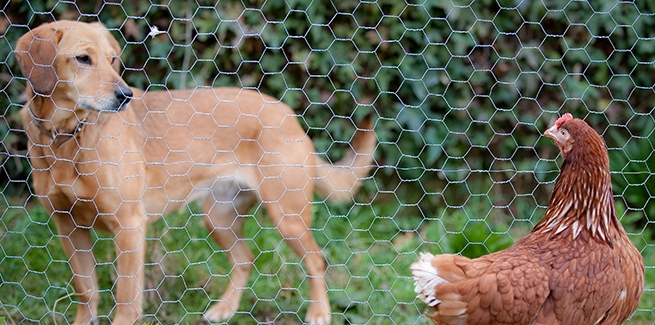Eating raw chicken linked to canine paralysis

Feeding dogs raw chicken meat, particularly chicken necks, has been linked to a rare but potentially fatal type of canine paralysis.
A study by researchers at University of Melbourne’s U-Vet Werribee Animal Hospital in Melbourne, Australia, found that dogs who consumed raw chicken meat had a 70% greater risk of developing acute polyradiculoneuritis (APN).
APN is a rare but debilitating condition that causes weakness in the hind legs, which may progress to the front legs, neck, head, and face. Infected dogs can have decreased reflexes, muscle tone, and muscle mass. If the chest muscles become affected, it can cause labored breathing. In extreme cases, some dogs may die from respiratory paralysis.
APN is also called “coonhound paralysis,” due to its association with dogs who’ve been bitten by a raccoon. No medications have been proven effective to treat APN, but most dogs recover fully without treatment, although it may take up to six months or more in some cases.
The Melbourne study is the first to link APN with the consumption of raw chicken meat.
APN is the canine counterpart to Guillain-Barré Syndrome (GBS) in humans, a condition that also causes muscle weakness and respiratory paralysis.
Like APN, the precise cause of GBS is unknown, but Campylobacter jejuni infection has been associated with GBS. In fact, the Melbourne researchers point out that Campylobacter has been identified as a triggering agent in up to 40% of GBS patients. Given the prevalence of the bacteria in undercooked chicken, the similarity of symptoms between APN and GBS, and the popularity of raw chicken as a dog snack in Australia, the researchers decided to start looking for connections.
“Our team . . . wanted to understand if consuming raw chicken could also be triggering APN in dogs,” said Matthias le Chevoir, DVM, DECVN, the study’s lead researcher. “Many of our team have previously worked overseas and know that a raw meat diet is less common there, so were intrigued by this potential connection.”
The team studied 27 dogs with clinical signs of APN along with 47 dogs who had no clinical signs. They examined the clinical signs and interviewed the owners about their dogs’ recent behavior and diet.
When they examined fecal samples collected within seven days of the appearance of clinical signs of APN, those samples were 9.4 times more likely to show a Campylobacter infection than samples from the control group, who showed no signs of APN.
The presence of Campylobacter in both dogs with APN and people with GBS led the researchers to suggest that the bacteria may also be a significant trigger of APN.
The researchers also found a significant association between APN and smaller dog breeds. They theorize that’s because smaller dogs are more likely to be fed smaller bones, such as chicken necks.
According to the researchers, their findings are of particular concern given the growing popularity of raw protein diets for dogs. If nothing else, they recommend that dog owners who feed their dogs raw meat diets go easy on the raw chicken until more research is done.
Photo credit: (c) iStock/dageldog



